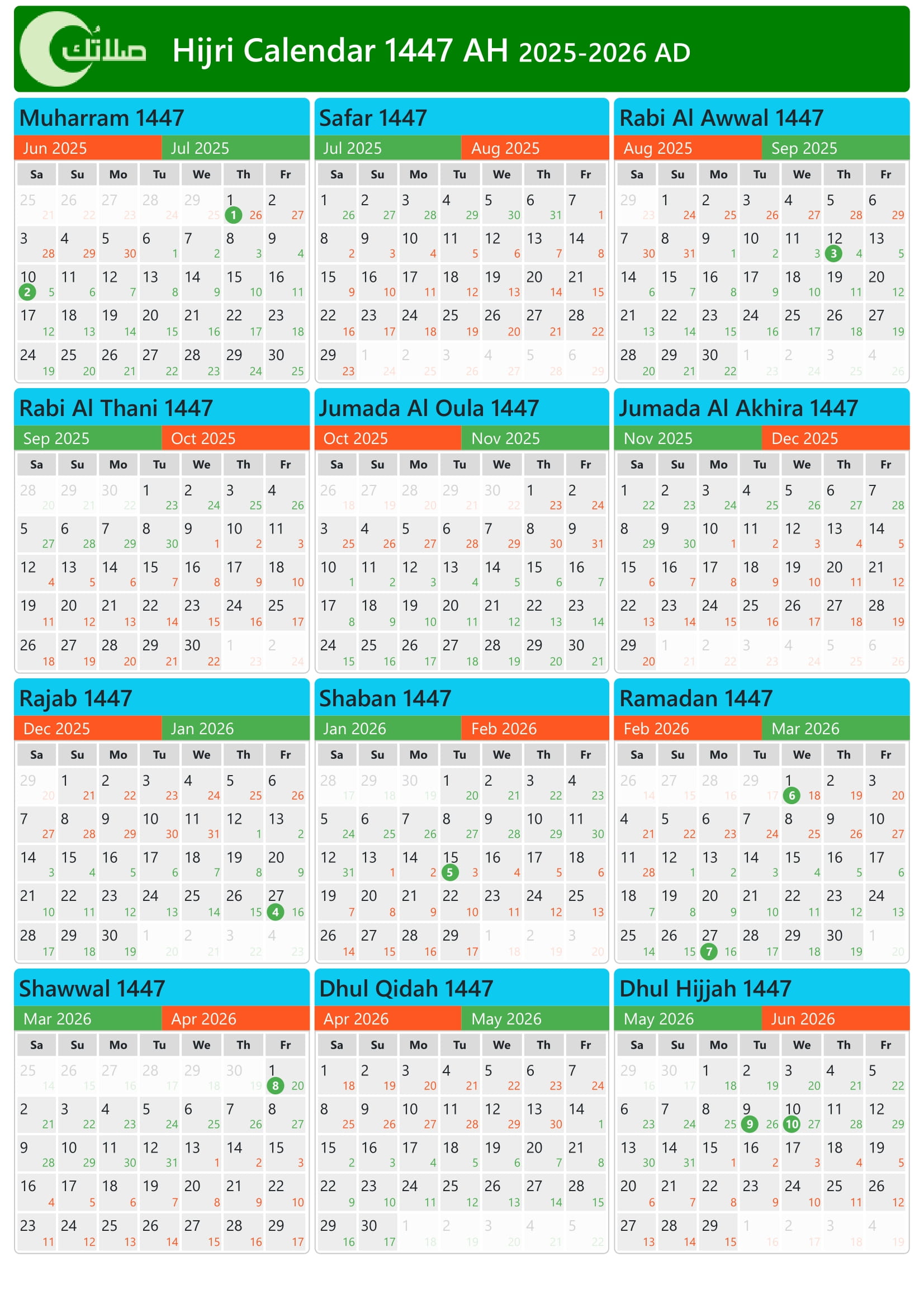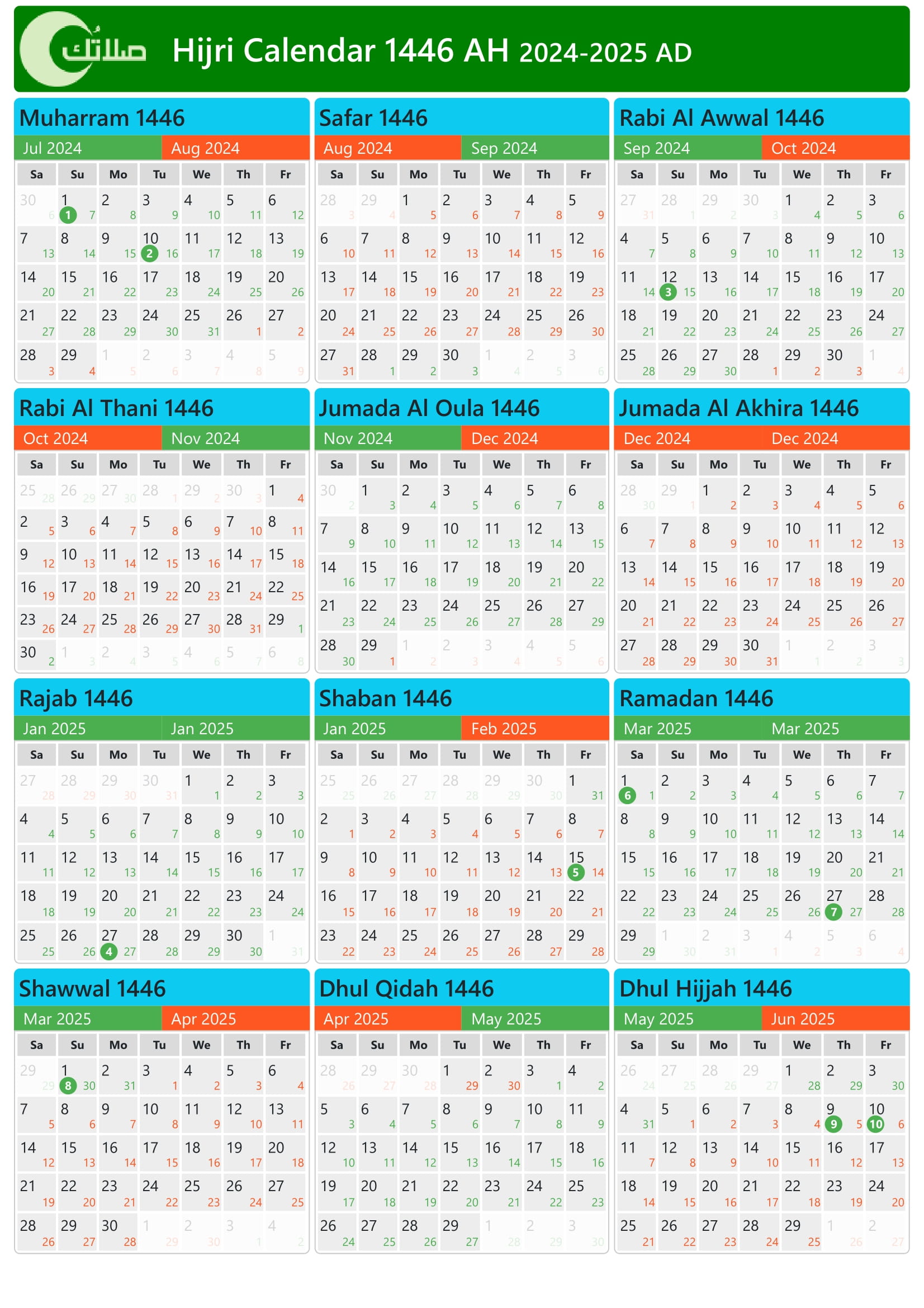In today's globalized society, cultural awareness is imperative. Interacting with people from various backgrounds and faiths necessitates an understanding of their beliefs and practices. When it comes to Islamic culture, knowing about the Islamic calendar is crucial. As such, we are proud to announce the recent publication of "Islamic Calendar: A Comprehensive Guide to Hijri Dates and Events," a book that provides extensive insight into this important topic.

2023 Islamic Calendar Hijri Dates and Important Events Digital - Source www.etsy.com
Editor's Note: Islamic Calendar: A Comprehensive Guide to Hijri Dates and Events is now available!
Our team has dedicated significant time and effort to analyzing and compiling information from various sources to create this comprehensive guide. We believe that this guide will be an invaluable resource for those looking to understand the Islamic calendar, its significance, and its use in determining religious observances and cultural events.
Key Differences:
| Gregorian Calendar | Islamic Calendar |
|---|---|
| Based on the Earth's orbit around the Sun | Based on the Moon's phases |
| 365.242 days in a year | 354.367 days in a year |
| 12 months | 12 lunar months |
| Months have 28-31 days | Months have 29-30 days |
Topics Covered in the Guide:
- The history and origins of the Islamic calendar
- The structure of the Islamic calendar, including months and years
- The significance of specific dates and events in the Islamic calendar
- The use of the Islamic calendar in determining religious observances and cultural practices
- The relationship between the Islamic calendar and other calendars
FAQ
This FAQ section provides detailed answers to commonly asked questions about the Islamic Calendar, known as the Hijri Calendar. It covers essential information on Hijri dates, events, and its significance in Islamic tradition.

Islamic Calendar 2025: A Comprehensive Guide To The Hijri Year 1447 - Source festivalcalendar2025uk.pages.dev
Question 1: What is the Islamic Calendar?
The Islamic Calendar, also known as the Hijri Calendar, is a lunar calendar used by Muslims worldwide. It is based on the phases of the moon and consists of 12 lunar months.
Question 2: When does the Islamic year begin?
The Islamic year begins with the month of Muharram, which marks the migration of Prophet Muhammad (PBUH) from Mecca to Medina in 622 AD. This event, known as the Hijra, serves as the starting point for the Islamic calendar.
Question 3: How many days are in a Hijri year?
A Hijri year consists of 354 or 355 days, depending on the lunar cycle. It is shorter than the Gregorian calendar, which has 365 or 366 days.
Question 4: What are the names of the Islamic months?
The Islamic months are named as follows: Muharram, Safar, Rabi' al-Awwal, Rabi' al-Thani, Jumada al-Awwal, Jumada al-Thani, Rajab, Sha'ban, Ramadan, Shawwal, Dhul-Qa'dah, and Dhul-Hijjah.
Question 5: What is the significance of Ramadan in the Islamic Calendar?
Ramadan is the ninth month of the Islamic Calendar and is considered one of the holiest months in Islam. Muslims observe fasting during Ramadan from dawn to sunset as a spiritual practice to purify their souls and strengthen their connection with God.
Question 6: How is the Islamic Calendar used in Islamic countries?
The Islamic Calendar is widely used in Islamic countries for religious purposes and for determining dates of important events such as festivals, holidays, and religious observances. It plays a vital role in the daily lives of Muslims, shaping their religious practices and cultural traditions.
In conclusion, the Islamic Calendar is an essential part of Islamic tradition, serving as a guide for religious observances and cultural practices. Understanding the principles and events associated with the Hijri dates is crucial for appreciating the significance of time within the Islamic faith.
To learn more about the Islamic Calendar and its impact on Islamic culture and history, explore the following article section.
Tips
For a more in-depth exploration, refer to Islamic Calendar: A Comprehensive Guide To Hijri Dates And Events. This article offers additional insights into the Islamic calendar and its significance.
Tip 1: The Islamic calendar is a lunar calendar, meaning it is based on the phases of the moon.
Tip 2: The Islamic year is made up of 12 lunar months, each of which begins with the new moon.
Tip 3: The Islamic calendar is shorter than the Gregorian calendar, which is used in most Western countries.
Tip 4: The Islamic calendar is used to determine the dates of religious holidays and festivals.
Tip 5: The Islamic calendar is also used to calculate the zakat, or annual alms tax.
Tip 6: The Islamic calendar is a rich and complex system that has been used for centuries.
By following these tips, you can gain a deeper understanding of the Islamic calendar and its importance.
To learn more about the Islamic calendar, visit the following resources:
Islamic Calendar: A Comprehensive Guide To Hijri Dates And Events
The Islamic calendar, or Hijri calendar, is a lunar calendar used in Muslim countries to determine religious and other occasions. It is based on the lunar cycle, with each month beginning on the new moon and lasting 29 or 30 days. The calendar is 11 days shorter than the solar year, which means that the dates of events on the Islamic calendar change each year relative to the solar calendar.
- Lunar-based: The Islamic calendar is based on the phases of the moon, with each month beginning with the new moon.
- 12 lunar months: The calendar consists of 12 lunar months, with each month having 29 or 30 days.
- Shorter than solar year: The Islamic calendar year is approximately 354 days long, which is 11 days shorter than the solar year.
- Months alternate 29 and 30 days: The months of the Islamic calendar alternate between 29 and 30 days, with the exception of the last month, Dhul-Hijjah, which always has 30 days.
- Leap years: To align with the solar year, the Islamic calendar includes leap years, which occur approximately every 33 years.
- Historical significance: The Islamic calendar was established during the reign of Caliph Umar in 638 CE, and marks important events in Islamic history, such as the migration of the Prophet Muhammad from Mecca to Medina (Hijrah).
The Islamic calendar is used to determine the dates of important religious events, such as the start of the fasting month of Ramadan, the annual pilgrimage to Mecca (Hajj), and the two Eids (festivals). It is also used to calculate the age of individuals and to mark historical events.

2023 Islamic Calendar Hijri Dates and Important Events Digital - Source www.etsy.com
Islamic Calendar: A Comprehensive Guide To Hijri Dates And Events
The Hijri calendar, also known as the Islamic calendar, is a lunar calendar that determines the dates of important Islamic events, including religious observances and festivals. The calendar is based on the phases of the moon, and each month begins with the sighting of the new moon. The year consists of 12 months, with 29 or 30 days each, and there are approximately 354 days in a Hijri year.

Islamic Date Calendar 2025: A Comprehensive Guide To Hijri Dates And - Source fiveyearcalendar2025to2027.pages.dev
The Hijri calendar is important for Muslims because it is used to determine the dates of religious observances, such as Ramadan, Eid al-Fitr, and Eid al-Adha. It is also used to calculate the time for prayers and fasting.
The Hijri calendar is a complex and fascinating system that has been used for centuries to mark the passage of time. By understanding the principles of the Hijri calendar, Muslims can better appreciate the importance of religious observances and the cyclical nature of time.
1. Introduction
2. The Lunar Cycle
3. The Hijri Months
4. Important Islamic Dates
5. The Significance of the Hijri Calendar
6. Conclusion
Conclusion
The Islamic calendar is a valuable tool for Muslims, as it allows them to determine the dates of important religious observances and to calculate the time for prayers and fasting. By understanding the principles of the Islamic calendar, Muslims can better appreciate the importance of their religious traditions and the cyclical nature of time.
In conclusion, the Islamic calendar is a complex and fascinating system that has been used for centuries to mark the passage of time. By understanding the principles of the Islamic calendar, Muslims can better appreciate the importance of religious observances and the cyclical nature of time.
